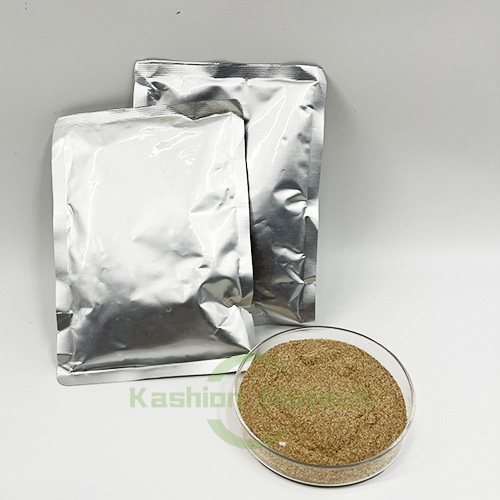
Home Products Sewage Treatment Bacteria Aquaculture Wastewater Treatment Cultivation of nitrification system in s
According to the factors affecting the growth of nitrifying bacteria, determine the indicators that should be controlled during the cultivation of nitrifying bacteria:

1. Dissolved Oxygen
Oxygen is the electron acceptor in the process of nitrification. The level of dissolved oxygen in the reactor must affect the process of nitrification. In the activated sludge process system, most scholars believe that dissolved oxygen should be controlled within 1.5~2.0mg/L, and nitrification tends to stop when it is lower than 0.5mg/L. At present, many scholars believe that SND (simultaneous nitrification and denitrification) can occur at low DO (1.5mg/L). When DO > 2.0mg/L, the influence of dissolved oxygen concentration on nitrification process may not be considered. However, DO concentration should not be too high, because too high dissolved oxygen can lead to too fast decomposition of organic matter, which makes microorganisms lack nutrition, and activated sludge is prone to aging and loose structure. In addition, the dissolved oxygen is too high and the energy consumption is too large, which is not suitable in terms of economy.
2. Temperature
In the biological nitrification system, nitrifying bacteria are very sensitive to temperature changes. In the range of 5~35 ℃, nitrifying bacteria can carry out normal physiological metabolic activities. When the wastewater temperature is lower than 15 ℃, the nitrification rate will drop significantly. When the temperature is lower than 10 ℃, the nitrification system that has been started can barely maintain, and the nitrification rate is only 25% of the nitrification rate at 30 ℃. Although the biological activity and nitrification rate increase with the increase of temperature, too high temperature will cause a large number of nitrifying bacteria to die. In actual operation, the nitrification reaction temperature is required to be lower than 38 ℃.
3. PH value
The nitrifying bacteria are very sensitive to the change of pH value, and the optimal pH value is 8.0~8.4. Under this optimal pH value, the nitrifying rate and the maximum nitrifying rate of nitrifying bacteria can reach the maximum value. When cultivating nitrifying bacteria, if the pH value of influent water is high, it is best to reach about 8.0. If it cannot be reached, it should not be pursued deliberately. As long as the pH value in the system is not lower than 6.5, if it is lower than this value, the alkalinity should be supplemented in time, such as NaOH, Na2CO3, etc.
4、COD/BOD
If the COD/BOD in the system is high, heterotrophic bacteria in the system will compete with nitrifying bacteria for dissolved oxygen. Since the number of heterotrophic bacteria is far greater than that of nitrifying bacteria, nitrifying bacteria often cannot obtain certain dissolved oxygen under the condition of high COD/BOD in the system, and cannot grow and multiply. Generally, if the BOD in the system (the author prefers COD) is higher than 20mg/l, it will inhibit nitrifying bacteria. If the influent COD/BOD is too high or the carbon nitrogen ratio is too high, the cultivation of nitrifying bacteria must be realized by delayed aeration, that is, when the COD/BOD in the system has been qualified or is at a low level, continue aeration to give nitrifying bacteria enough growth time. During aeration, the dissolved oxygen should also be controlled to be as low as possible below 3mg/L to prevent accelerated aging of sludge.
5. Ammonia nitrogen concentration
When the free ammonia is too high in the high ammonia nitrogen wastewater system, the nitrifying bacteria will be inhibited. Therefore, it is recommended that the PH should be controlled as neutral as possible during the commissioning of high ammonia wastewater treatment. If the PH is too high, the free ammonia concentration will increase. You can also control the low ammonia nitrogen concentration through dilution, which is safer. Therefore, during the cultivation of nitrifying bacteria and normal operation, the ammonia nitrogen concentration in the effluent of the system should be kept within the process requirements, Ensure that qualified water is delivered from the system from the beginning of commissioning. Combining the above factors, we should try our best to create favorable conditions for the growth of nitrifying bacteria and formulate the best plan.
Name: Nicole Yu
Mobile:+86 17718148007
Tel:+86 17718148007
Whatsapp:8617718148007
Email:sales@kashionbiotech.com
Add:No.6, Zhanxi Road, Yaohai District, Hefei City, Anhui Province, China.